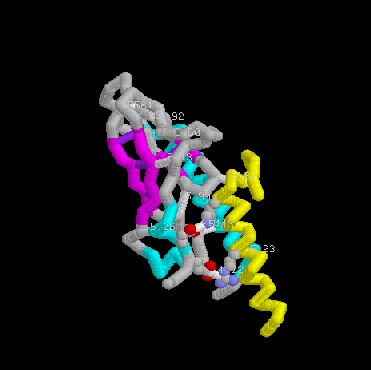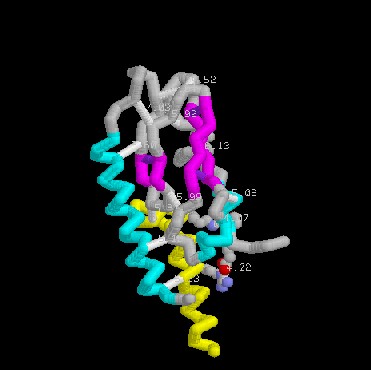Group:SMART:Greenwood SMART Team
From Proteopedia
2008-2009 SMART Team Project: GLP-1R with Exendin
| |||||||||
| 3c59, resolution 2.30Å () | |||||||||
|---|---|---|---|---|---|---|---|---|---|
| Sites: | |||||||||
| Ligands: | |||||||||
| Non-Standard Residues: | |||||||||
| Gene: | Glucagon-like peptide-1 receptor(GLP1R) (Homo sapiens) | ||||||||
| Related: | 3c5t | ||||||||
| |||||||||
| |||||||||
| Resources: | FirstGlance, OCA, PDBsum, RCSB | ||||||||
| Coordinates: | save as pdb, mmCIF, xml | ||||||||
Type 2 diabetes is characterized by chronically elevated blood glucose levels resulting from impaired insulin function. This results, in part, from low levels of the natural hormone, glucagon like peptide-1 (GLP-1). GLP-1 binds to and activates the GLP-1 receptor (GLP-1R) resulting in increased insulin synthesis and secretion which serves to reduce blood glucose levels. As a result, the GLP-1 receptor has become an important therapeutic target for the treatment of type 2 diabetes. The synthetic Exendin-4 has a higher affinity for the receptor. Due to the differences in structure, Exendin-4 has no longer duration of action, therefore releasing more insulin. An important feature of the GLP-1R is the N-terminal extracellular domain (NTD). A two-step mechanism occurs through GLP-1 binding to the NTD and receptor activation via the core domain of the receptor. In the first step of binding, hydrogen bonds are formed between the NTD and Exendin-4. By understanding the nature of GLP-1R activation, therapeutic drugs could be developed to stimulate insulin production.




